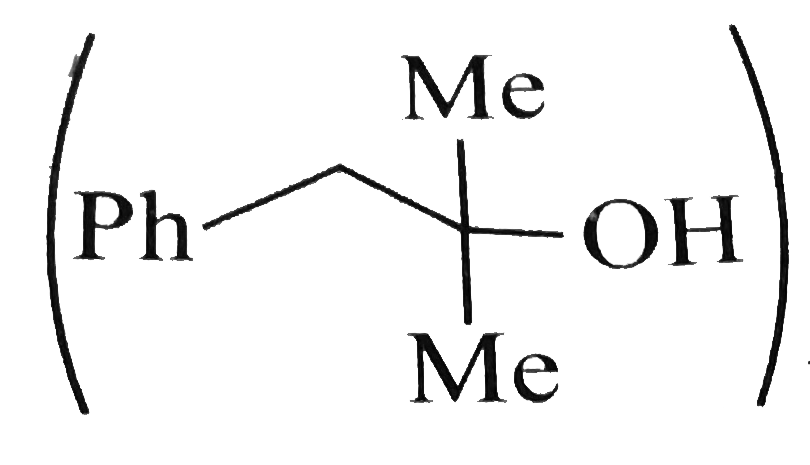A Grignard reagent (A) and a haloalkene (B) react together to give (C) . Compound (C) on heating with KOH yeilds a mixture of two geometrical isomers (D) and € of which (D) predominates . Compound (C) on reaction with HBr in presence of a peroxide gives 1-bromo-3- phenylpropane. Give the structures of (A), (B) and (C) and configurations of (D) and (E).
PhMgX(A)+X−CH2−CH(B)=CH2−−−−−−→(−MgX2)


Topper's Solved these Questions
- BOOK - OP TANDONCHAPTER - HALOALKANES AND HALOARENES EXERCISE - Objective Questions234videos
HALOALKANES AND HALOARENES
- BOOK - OP TANDONCHAPTER - HALOALKANES AND HALOARENES EXERCISE - Objective Questions Lavel -B48videos
HALOALKANES AND HALOARENES
- BOOK - OP TANDONCHAPTER - HALOALKANES AND HALOARENES EXERCISE - Matching type2videos
HALOALKANES AND HALOARENES
- BOOK - OP TANDONCHAPTER - ELECTROCHEMISTRYEXERCISE - Matrix-Matching Type Question3videos
ELECTROCHEMISTRY
- BOOK - OP TANDONCHAPTER - ISOMERISM (STRUCTURAL AND STEROISOMERISM)EXERCISE - INTEGER7videos
ISOMERISM (STRUCTURAL AND STEROISOMERISM)
Similar Questions
A Grignard regane t(A0 and a haloalkene (B) react together to give (C) compound (C) on heating with KOH yields a mixture of two geometrical isomers, (D) and (E) of which (D) predominates. (C) gives 1− bromo 3− phenyl propane on reaction with Hbr in the presence of a peroxide. Give teh structures of (A),(B), and (C) and the configuratins of (D) and (E).
View SolutionA Grignard reagent (A) and a haloalkene (B) react together to give (C). Compound (C) on heating with KOH yields a mixture of two geometrical isomers, (D) and (E), of which (D) predominates. (C) and (E) have the same molecular formula and (C) gives 1-bromo-3-phenyl propane on reaction with HBr in the presence of a peroxide. Give structures of (A), (B)and (C) and configuration of (D) and (E) with reasons.
View Solution
Knowledge Check
- Question 1 - Select One
(A) light blue coloured compound on heating will convert into black (B) which reacts with glucose gives red compound (C) and (A) reacts with ammonium hdyroxide in excess in presence of ammonium sulphate give blue compound (D). What is (A), (B), (C) and (D)?
A[Cu(NH3)4]SO4,CuO,Cu2O,CuSO4BCuSO4,CuO,Cu2O,Cu(OH)2CCu(OH)2,Cu2O,CuO,[Cu(NH3)4]SO4DCu(OH)2,CuO,Cu2O,[Cu(NH3)4]SO4 - Question 2 - Select One
The compound A on treatment with Na gives B, and with PCl5 gives C. B and C react together to give diethyl ether. A, B and C are in the order
AC2H5OH,C2H6,C2H5ClBC2H5OH,C2H5Cl,C2H5ONaCC2H5Cl,C2H6,C2H5OHDC2H5OH,C2H5ONa,C2H5Cl
Two different G.R.(A) and (B) give the product (X)
 on reaction with (C) and (D) respectively. Give the structures of (A),(B),(C) and (D).View Solution
on reaction with (C) and (D) respectively. Give the structures of (A),(B),(C) and (D).View SolutionCyclopentane on heating with bromine gives compound (A) which on reaction with sodium ethoxide in ethanol, gives (B), Compound (B) on reaction with NBS in presence of peroxide gives (C) .Identify (A), (B) and (C) .
View SolutionA violet compound of manganes
(A) decomposes on heating to liberate oxygen and compounds (B) and (C) of manganese are formed. Compound (C) reacts with KOH in the presence of KNO3 to give compoundView SolutionTwo diffeent Grignard reagents (A) and (B) give the product 2-methyl-1-phenylpropan-2-ol (X) on reaction with (C ) and (D ) respectively. Give the structures of (A),(B),(C ) and (D).
View SolutionAn organic compound (A) (C6H10O) on reaction with CH3MgBr followed by acid treatment gives compound (B). The compound (B) on ozonolysis gives compound (C ), which in the presence of a base gives 1-acetyl cyclopentane (D). The compound (B) on reaction with HBr gives compound (E ). Write the structures of (A), (B), (C ), (D), and (E ). Show how (D) is formed from (C ).
View SolutionA ketone A which undergoes haloform reaction gives compound B on reduction. B on heating with sulphuric acid gives compound C, which forms mono-ozonide D. The compound D on hydrolysis in presence of zinc dust gives only acetaldehyde. Write the structures and IUPAC names of A, B and C. Write down the reactions involved.
View Solution

